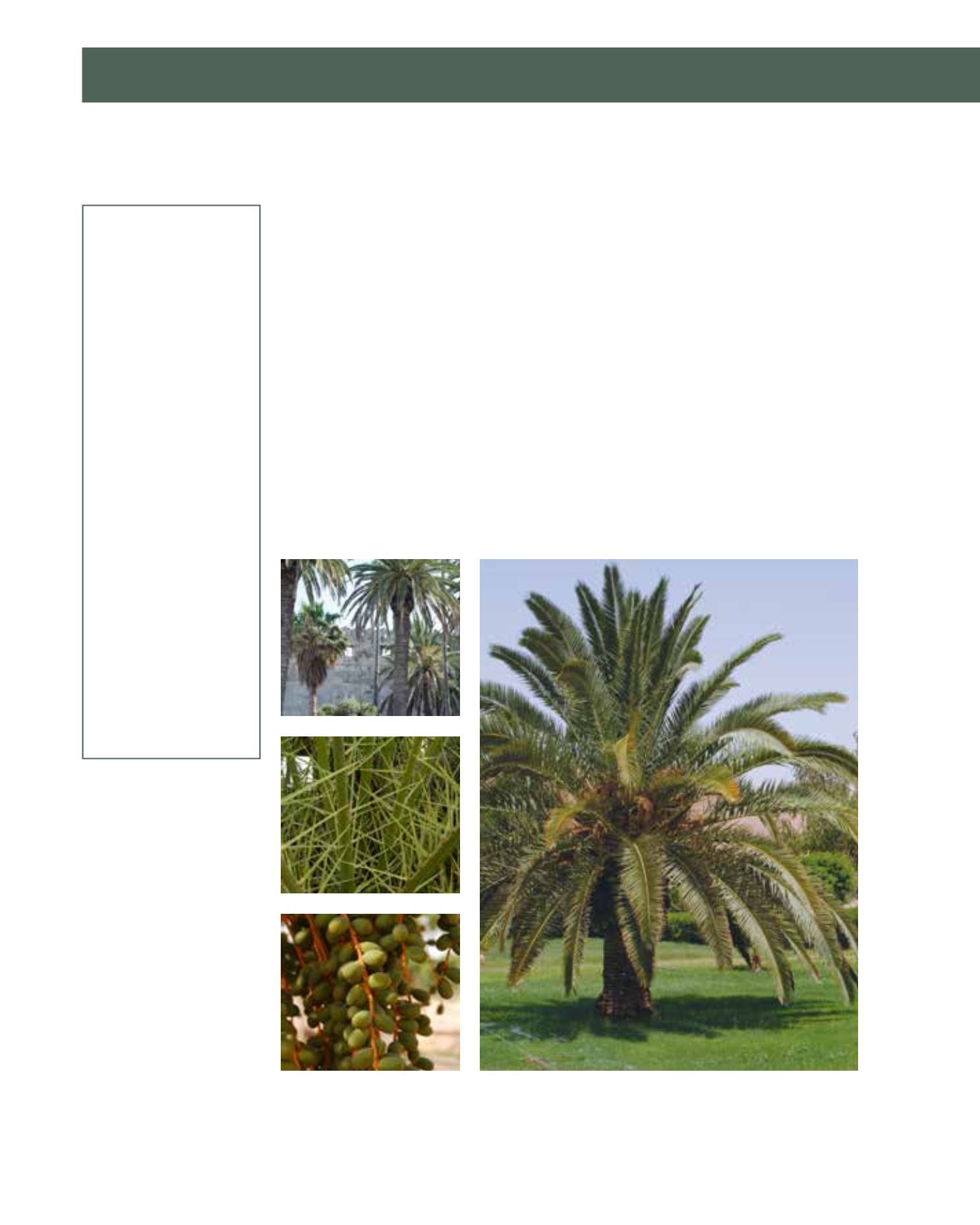

GENERAL
Origin
:
Mediterranean
Vigour
:
normal growth
rate
Humidity
:
semi-arid,
semi-humid,
semi-humid, very
humid
Propagation :
sowing and
pricking out
Maintenance :
moderate
CONDITIONS
Urban climate :
resistant
Dessication :
resistant
Stagnant water :
vulnerable
Irrigation
:
medium
Salinity/ppm :
high (5000 ppm)
Hardiness
:
-6°C
SHAPE
Type
:
palms
Height
:
6 m-18 m
Spread
:
7 m-15 m
Foliage
:
evergreen
FLOWER
Colour
:
bright yellow
Size
:
10 cm - 100 cm
Period
:
February - June
FRUIT
Type of fruit :
drupe(fleshy/
juicy)
Fruit size
:
1.5 cm - 2.3 cm
Toxicity
:
inedible, fruit
The Canary Island Date Palm, native to the Canary Islands, is a relative of Phoenix dactylifera,
the true date palm. The difference between the two is easily recognized by Canary Island Date
Palm’s crown of dark green fronds (P. dactylifera has blue-green fronds) and the pineapple shape
of the short, thick trunk (P. dactylifera is tall and straight). P. canariensis is widely planted as an
ornamental plant, particularly in areas with a Mediterranean climate. It is often seen in Arriyadh,
where the difference goes unnoticed, except by botanists. It is less frost- and drought-tolerant
than P. dactylifera. It is a large-spreading, densely branched palm, up to 18 metres tall and 15 m
wide. The glossy green leaves are pinnate, with sharp spines along the lower part of the stem. Fruit
is produced on female palms as an oval, yellow to orange drupe containing a single seed, and
is of poor quality. A slow-growing tree requiring full sun, it is frost-tolerant to –7°C for only a
short period. P. canariensis prefers a rich, moist, alluvial, sandy soil: salinity tolerance is medium.
Irrigation requirements are moderate. Propagation is by seed. Many pests attack this palm: giant
palm borer weevils, leaf skeletonisers and scale. It is also susceptible to lethal yellowing, fusarium
and ganoderma fungal diseases. The high maintenance of this palm involves trimming to enhan-
ce its appearance: they are often ‘pineappled’ to stop fronds from touching cars or pedestrians, as
well as clearing fruit litter. It is best planted along roads and in parks.
229
Phoenix canariensis,
Arecaceae
Canary Island Date Palm
















